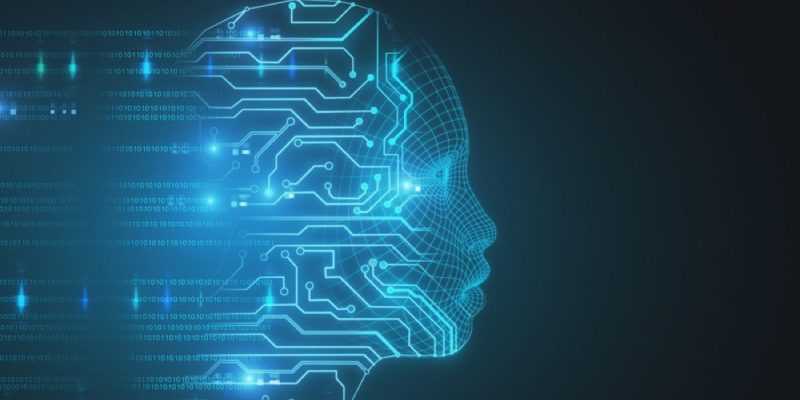During 2018, we witnessed a dramatic rise in the platforms, tools, and applications based on Machine learning and artificial intelligence. These technologies not only impacted software and the Internet industry but also other verticals such as healthcare, legal, manufacturing, automobile and agriculture.

We will continue to see the advancement of ML and AI-related technologies in 2019 and beyond. Companies such as Amazon, Apple, Facebook, Google, IBM and Microsoft are investing in research and development of AI, which will benefit the ecosystem in bringing AI closer to consumers.
Here are 5 AI trends to watch out for in 2019:
1 .The rise of AI-enabled chips
Unlike other software, AI heavily relies on specialized processors that complement the CPU. Even the fastest and most advanced CPU may not improve the speed of training an AI model. While inferencing, the model needs additional hardware to perform complex mathematical computations to speed up tasks such as object detection and facial recognition.
In 2019, chip manufacturers such as Intel, NVIDIA, AMD, ARM and Qualcomm will ship specialized chips that speed up the execution of AI-enabled applications. These chips will be optimized for specific use cases and scenarios related to computer vision, natural language processing and speech recognition. Next generation applications from the healthcare and automobile industries will rely on these chips for delivering intelligence to end-users.
2019 will also be the year where hyperscale infrastructure companies like Amazon, Microsoft, Google, and Facebook will increase the investments in custom chips based on field programmable gate arrays (FPGA) and application specific integrated circuits (ASIC). These chips will be heavily optimized for running modern workloads based on AI and high-performance computing (HPC). Some of these chips will also assist next-generation databases to speed up query processing and predictive analytics.
Early indicators – Project Nitro from Amazon, Cloud TPUs from Google, Project Brainwave from Microsoft, Intel Myriad X VPU
2. Convergence of IoT and AI at the edge
In 2019, AI meets IoT at the edge computing layer. Most of the models trained in the public cloud will be deployed at the edge.
Industrial IoT is the top use case for artificial intelligence that can perform outlier detection, root cause analysis and predictive maintenance of the equipment.
Advanced ML models based on deep neural networks will be optimized to run at the edge. They will be capable of dealing with video frames, speech synthesis, time-series data and unstructured data generated by devices such as cameras, microphones, and other sensors.
IoT is all set to become the biggest driver of artificial intelligence in the enterprise. Edge devices will be equipped with the special AI chips based on FPGAs and ASICs.
Early indicators – Support for ML inferencing at the edge by AWS Greengrass, AI Toolkit for Azure IoT Edge, Google Cloud IoT Edge, FogHorn Lightning Edge Intelligence, and Project Flogo by TIBCO.
3. Interoperability among neural networks becomes key
One of the critical challenges in developing neural network models lies in choosing the right framework. Data scientists and developers have to pick the right tool from a plethora of choices that include Caffe2, PyTorch, Apache MXNet, Microsoft Cognitive Toolkit, and TensorFlow. Once a model is trained and evaluated in a specific framework, it is tough to port the trained model to another framework.
The lack of interoperability among neural network toolkits is hampering the adoption of AI. To address this challenge, AWS, Facebook and Microsoft have collaborated to build Open Neural Network Exchange (ONNX), which makes it possible to reuse trained neural network models across multiple frameworks.
In 2019, ONNX will become an essential technology for the industry. From researchers to edge device manufacturers, all the key players of the ecosystem will rely on ONNX as the standard runtime for inferencing.
Early indicators – Windows 10 ships with ONNX runtime; Intel’s OpenVINO toolkit supports ONNX.
4. Automated machine learning will gain prominence
One trend that’s going to change the face of ML-based solutions fundamentally is AutoML. It will empower business analysts and developers to evolve machine learning models that can address complex scenarios without going through the typical process of training ML models.
When dealing with an AutoML platform, business analysts stay focused on the business problem instead of getting lost in the process and workflow.
AutoML perfectly fits in between cognitive APIs and custom ML platforms. It delivers the right level of customization without forcing the developers to go through the elaborate workflow. Unlike cognitive APIs that are often considered as black boxes, AutoML exposes the same degree of flexibility but with custom data combined with portability.
Early indicators – DataRobot, Google Cloud AutoML, Microsoft Custom Cognitive APIs, Custom Entities for Amazon Comprehend.
5. AI will automate DevOps through AIOps
Modern applications and infrastructure are generating log data that is captured for indexing, searching, and analytics. The massive data sets obtained from the hardware, operating systems, server software and application software can be aggregated and correlated to find insights and patterns. When machine learning models are applied to these data sets, IT operations transform from being reactive to predictive.
When the power of AI is applied to operations, it will redefine the way infrastructure is managed. The application of ML and AI in IT operations and DevOps will deliver intelligence to organizations. It will help the ops teams perform precise and accurate root cause analysis.
AIOps will become mainstream in 2019. Public cloud vendors and enterprise are going to benefit from the convergence of AI and DevOps.
Early indicators – Moogsoft AIOps, Amazon EC2 Predictive Scaling, Azure VM resiliency, Amazon S3 Intelligent Tiering
Machine learning and artificial intelligence will become the key technology trends of 2019. From business applications to IT support, AI is going to impact the industry significantly.
Source: https://www.forbes.com




